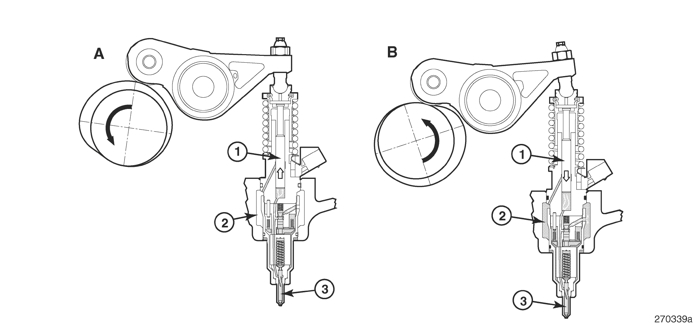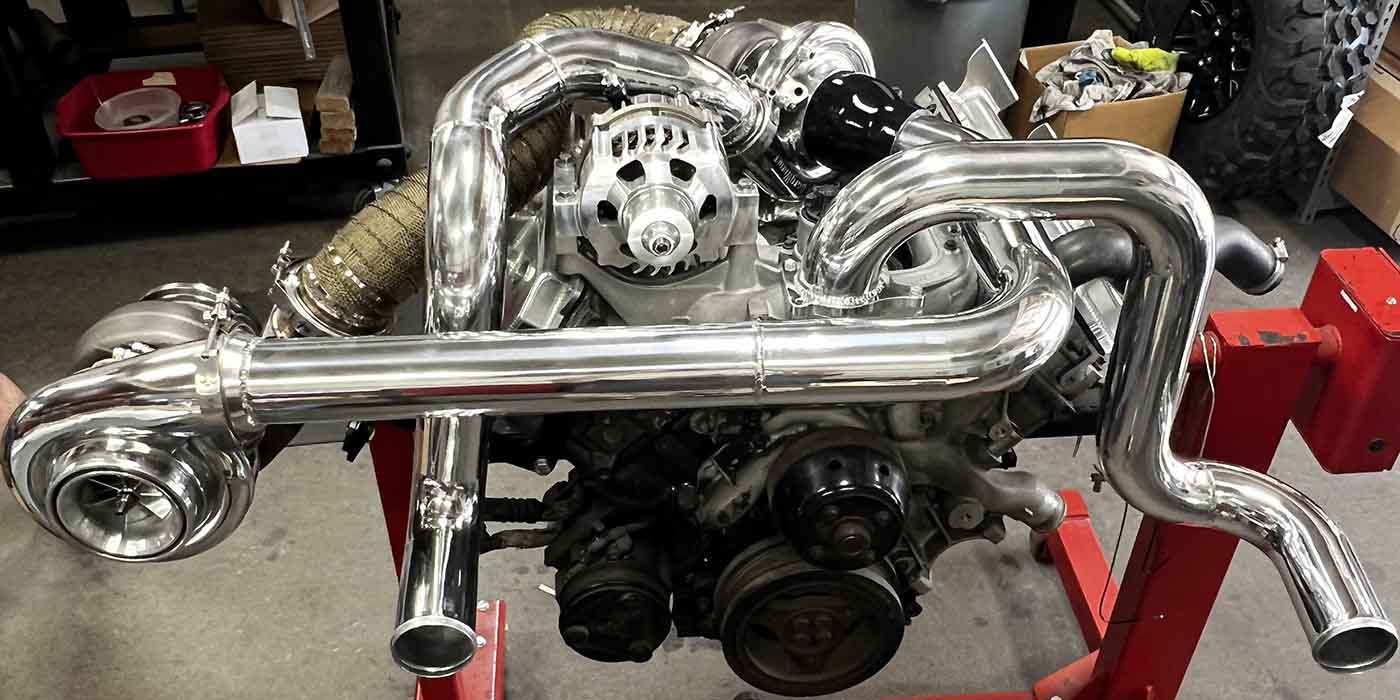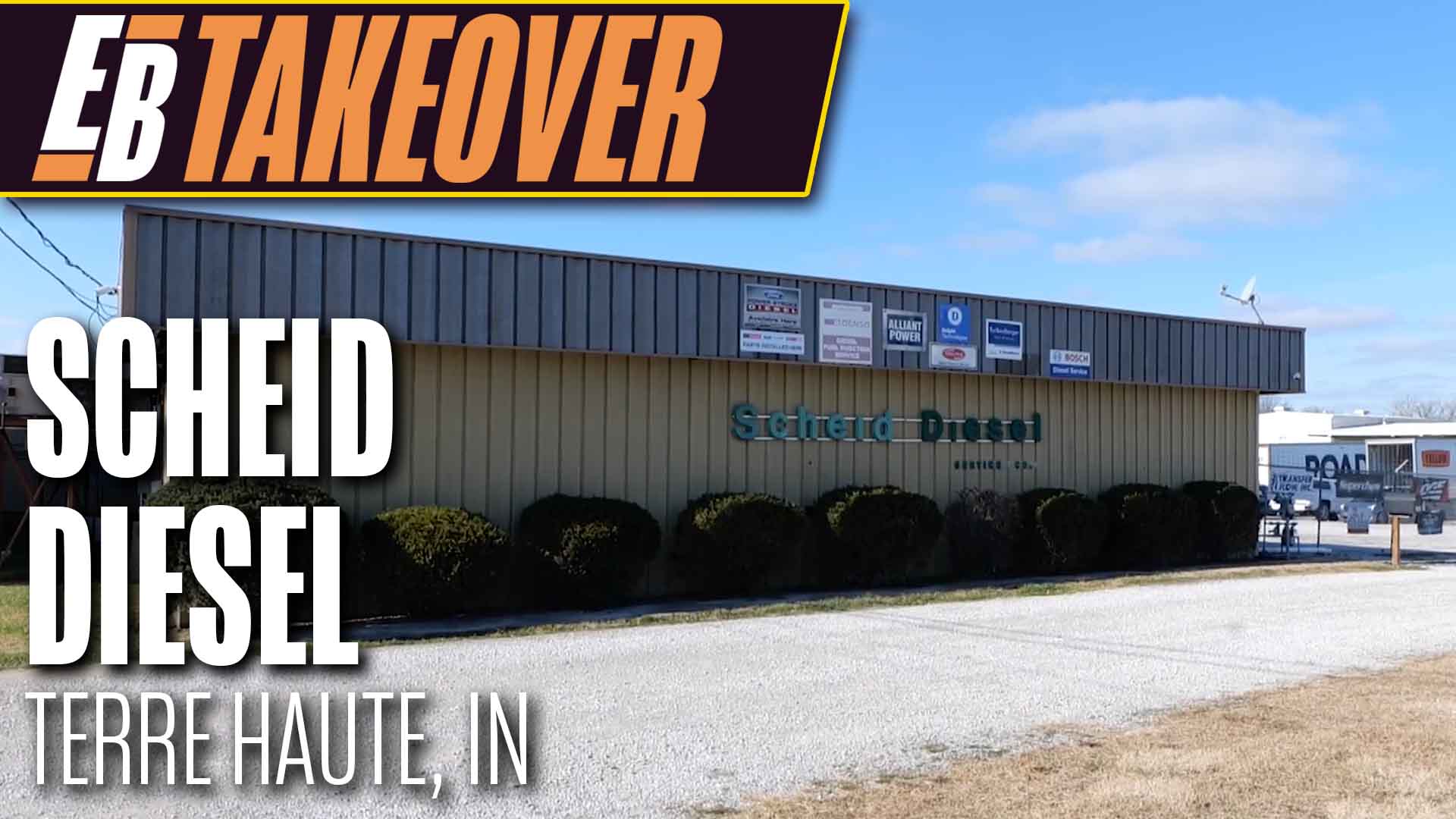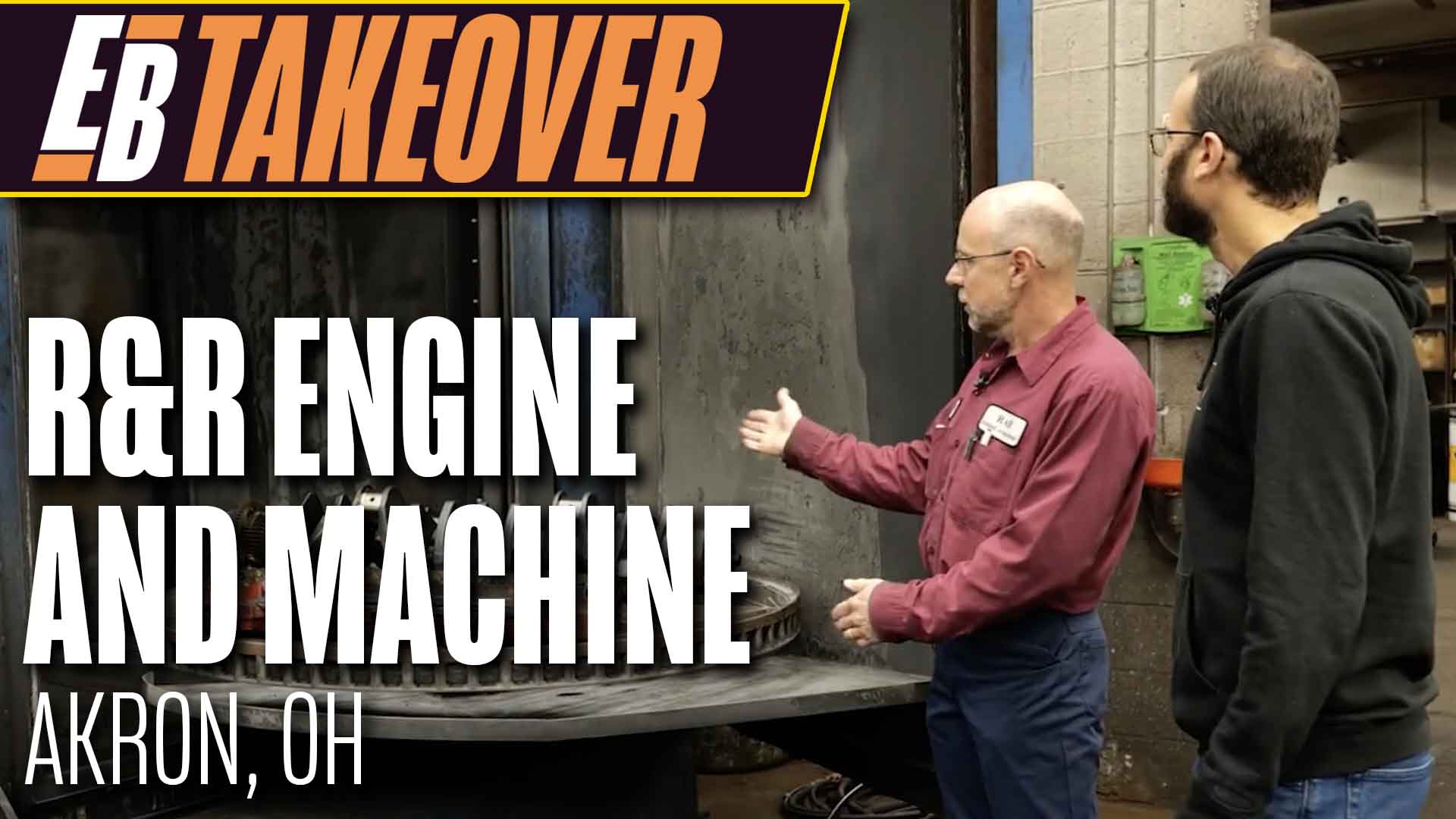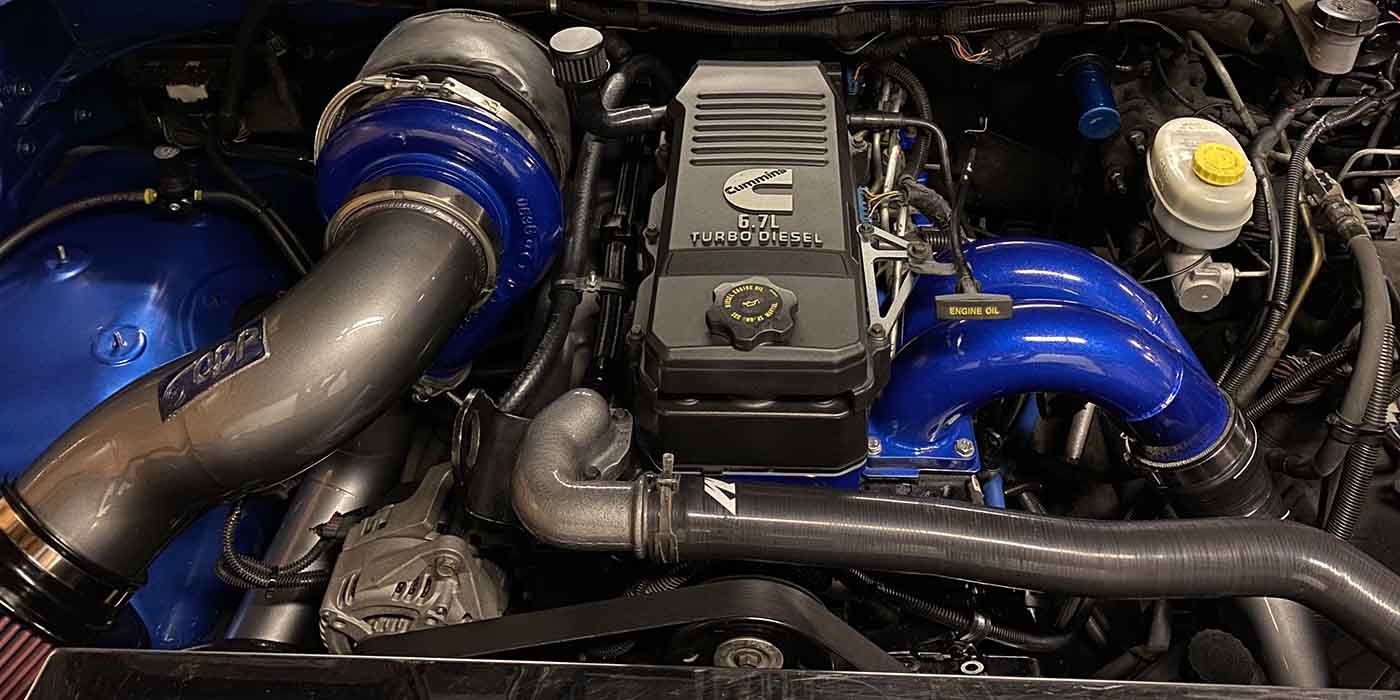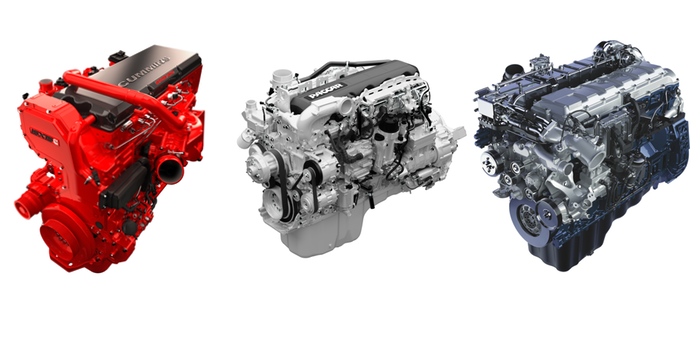
With the end of another year approaching, it’s always a popular idea to look back and reflect on the experiences that were encountered throughout the year. The more I thought about it, it seemed like a great idea because, as technicians, each day is a new challenge and we need to share those experiences in the hopes of helping one another.
Knowing that readers of this magazine typically save issues from year to year – even decade to decade – makes looking back pretty easy.
But why stop at one year?
If we look back over the past 20 years, I am sure we could spend the whole day just talking about changes and challenges that have impacted our lives – as well as new technology that has changed the way we live day to day. Think about the diagnostic procedures and specialty tools needed to make a simple repair today as compared to those of 20 years ago. Back then, a couple of wrenches, a basic knowledge of how an engine operates and an ability to talk to a customer was (almost) enough. Today, good technicians are in high demand as the transportation industry becomes more complex.
And when I reflect back to almost 30 years ago, the automobile industry was trying to come out of the dark ages. Manufacturers were scrambling to meet emissions demands and fuel efficiency by throwing horsepower and torque right out the window. You could open the hood of a mid-1970s car and your first impression would be “vacuum line hell.”
With the introduction of fuel injection, the vacuum lines became fewer – and so did the technicians. Techs were scared to death at the thought of a fully computer-controlled engine. It seemed to scare the socks right off of many of them as though you were making them change their religion. When I attended my first fuel injection school, I came out thinking that this was the best thing since sliced bread. Even though it seemed complex, fuel injection was truly defining the way an engine needed to perform given a set of parameters that it had to operate in. Now, look at what we have: vehicles today come with more than just engine computers on board. We even have Wi-Fi capability at our fingertips while driving. Not necessarily important to improving performance in the engine compartment but it’s definitely a boost for today’s social media.
Now, think about the diesel engine over the last 30 years. From a rattling bucket of bolts that often got a frown from people it’s become a highly sought-after engine among the younger high school generation. Who would ever have imagined that one? But, when thinking about how computers changed gasoline, look at what computers have done for diesel and the level of performance and fuel economy. Because of EPA standards and how manufacturers are modeling the diesel engine, are we currently in the “dark ages” with the present-day diesel engine? Thanks to rising emissions standards, now you open the hood of a diesel truck and say “What the hell? Where did the engine go?”
With the gasoline engine and unleaded fuel, American manufacturers finally overcame the obstacles and triumphed to bring us more than just the Chevette and Pinto. But where are we going with diesel? True, we have come a long way, but is the reliability still there? Class 8 trucks are often the testing grounds for manufacturers. Think about it: the rationale has been that if your engine design can make it in this sector of transportation, with the million-mile expected lifespans, it can probably work well in a mid-size truck.
But, with so many emissions devices there is no longevity. While trying to achieve clean air, increased engine temperatures and backpressure seem to be the silent killers – and low-sulphur fuel doesn’t help anything either. Beware, as this will be a continuing issue. Cleaner air is being demanded and more restrictions are in place and on the horizon. While there are simply no more devices that can be placed on an engine for cleaner air, the devices that are being used now such as SCR, DPF, and EGR will see even more action.
As for some of the repairs and learning experiences we’ve seen in 2015, they seem to center on a lot of diagnostic codes and failures of emissions-related components for the diesel engine. Most repairs have been related to breached DPFs, stuck EGR valves, leaking EGR coolers, faulty NOx sensors, stuck turbos and throttle valves. With low-sulphur fuel, there have been quite a few injector replacements also. This doesn’t include the number of rebuilds due to piston rings that can’t handle the pressure.
The sad reality is, all of these failures are happening before 300,000 miles. Longevity for many of these parts is not really a consideration for a Class 8 truck.
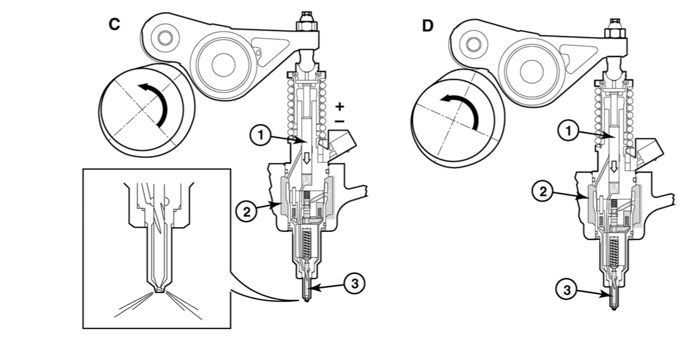
There are four phases of the injector cycle of operation. First is known as the Fill phase (A, above). Inside the top of the injector is a plunger (1). The plunger is pushed down by the rocker arm, which is moved by the lobe on the camshaft. The plunger moves up in the injector as the camshaft rotates and the rocker arm is on its way to the camshaft base circle, the fuel valve is open allowing fuel to be drawn in. Filling continues until the pump plunger reaches its upper position.
Next the spill phase (B, above) begins. As the camshaft rotates, the rocker arm pushes the pump plunger down. Fuel flows through a fuel valve through holes in the injector and into the fuel gallery (2).
Then begins the injection phase (C, above). As the rocker arm continues to push down on the plunger, the fuel valve closes and injection occurs allowing fuel to exit the injector nozzle (3). The injection phase ends when the fuel valve opens and pressure inside the injector drops below nozzle opening pressure.
Finally comes the pressure drop phase (D, above). The fuel valve opening and closing is controlled by the double solenoid, which is electronically actuated by the ECM (Engine Control Module).
The fuel valve opening and closing determines the amount of fuel per injection stroke. Each injector is labeled with a trim code. When the injector is replaced, the new trim code has to be programmed into the ECM for the cylinder it is replacing for proper fuel management. Copper sleeves are in the injector bores of the cylinder head. Engine coolant circulates around the copper sleeves to act as cooling jackets to control injection temperature.
It’s not all mechanical either, as we learned this past May from Engine Builder contributor John Martin (Diesel Engine Oils Will Soon Be Changing,” May 2015, page 18) two new diesel engine oil performance categories will appear on the market in 2017. These new categories are the direct result of our governmental demands for reduced greenhouse gas (GHG) emissions (primarily CO2).
Changes to truck fuel economy regulations are nothing new, of course; the latest took effect in 2014, and truck and engine manufacturers were able to meet these requirements (approximately a 3 percent improvement) by incorporating currently available diesel engine technology. The second set of requirements, scheduled to take effect with the 2017 model year, will require the development of some new and different technologies to meet the regulated approximately 3–5 percent further improvement. Even further reductions are currently being discussed for the 2020 and 2025 model years. The Union of Concerned Scientists requested a 40 percent reduction by 2025, so Martin suggests we could have a long way to go.
He estimated that 80-85 percent of diesel trucks in the U.S. have been using SAE 15W-40 grade oils meeting the API CJ-4 performance specification for several years now. Approximately 5 percent of end users have embraced synthetic API CJ-4 diesel oils and/or SAE 10W-30 viscosity diesel oils to improve fleet fuel economy slightly. But the majority of these oils won’t yield fuel economy improvements good enough to meet the 2017 legislated GHG requirements.
PC-11 will now define two separate heavy-duty diesel lube oils. PC-11A (which will likely be called API CK-4) is scheduled to be commercialized in March 2017. This oil performance category will address pre-2017 engine designs and all the various XW-40 and XW-30 grade oils on the market since much is known about their actual field performance. All the necessary laboratory engine tests needed to define API CK-4 diesel performance have been developed, and labs are currently installing and calibrating dynamometer test stands.
In mid-June, a regulatory proposal for tighter greenhouse gas (GHG) emissions and fuel economy standards for heavy- and medium-duty trucks was announced by the U.S. Environmental Protection Agency (EPA) and the National Highway Traffic Safety Administration (NHTSA). The long-anticipated vehicle and engine standards cover all types of trucks, including large pickups, vans and buses, for model years 2021 through 2027. In addition, the proposed rules incorporate the first efficiency standards for new trailers.
In an article written by Seth Skydel and published in Engine Builder’s sister publication Fleet Equipment magazine, the proposed “Phase 2 GHG standards” will reduce carbon dioxide emissions and fuel consumption for tractors by as much as 24 percent in 2027 compared to 2018. The agencies added that the cost of new fuel saving technology in a 2027 model would be recovered in two years or less. In particular, the regulators said that a model year 2027 tractor would cost about $12,400 more and trailers as much as $1,230 more, than those made in 2017 when current standards expire.
Basically it’s a waiting game while technological advances push toward cleaner air. Integrity of the parts to handle the stress is somewhat of a concern also. But before giving up, let’s see what changes unfold and how manufacturers will conquer the challenges in 2016.
You can count on Engine Builder to continue to spread the news and technical information to you and you’re invited to let us know what we can do to help improve your business.
From me, I wish everyone the best for a happy and healthy holidays. If you have any experiences that you would like to share, feel free to contact me.


